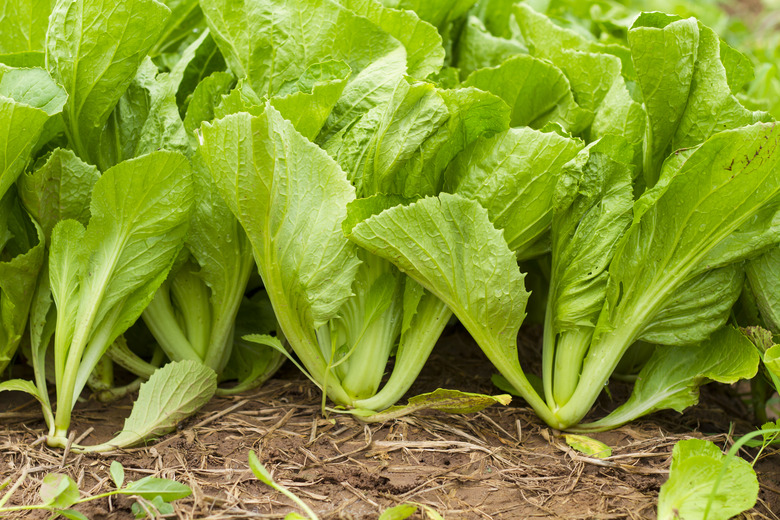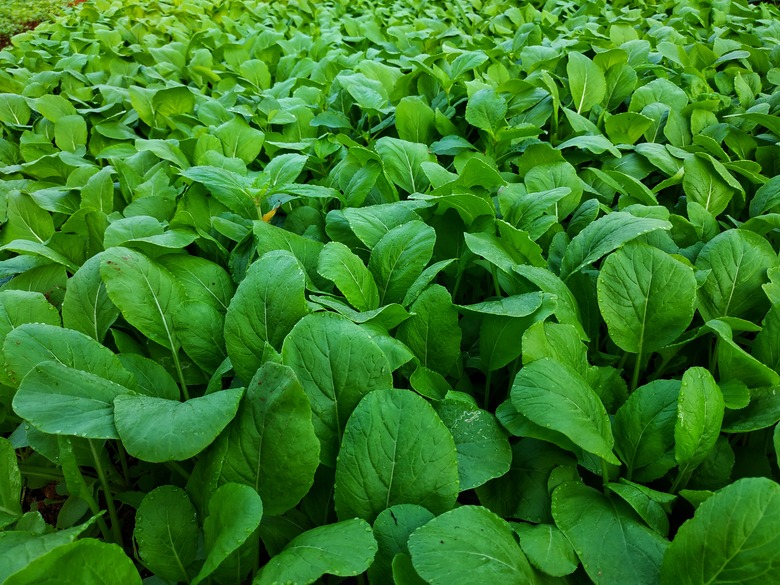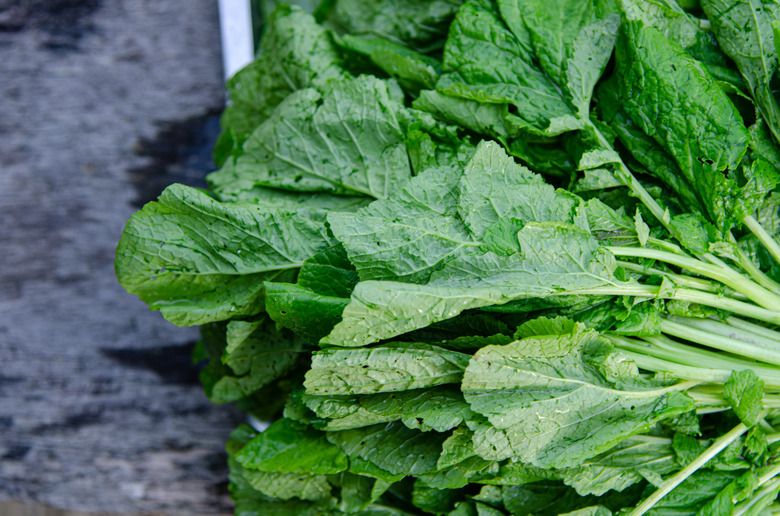How To Grow Mustard Greens
We may receive a commission on purchases made from links.
- Best uses for mustard greens
- How to grow mustard greens
- Starting mustard greens from seed
- Starting mustard greens from seedlings
- In what zone do mustard greens grow best?
- When should you plant mustard greens?
- Soil, sunlight, and water recommendations for mustard greens
- How to winterize mustard greens
- How to harvest mustard greens
- Common pests and other problems for mustard greens
- Common diseases for mustard greens
When topping a hot dog, you probably don't think of mustard as a vegetable. However, this popular condiment comes from the seeds of the mustard plant (Brassica juncea) and is low in calories, fat, and sugar, allowing you to indulge without guilt. Often overlooked are the leaves of the mustard plant. Mustard greens are edible and lend an indescribable zing to salads and other dishes.
Although technically a biennial (or a plant that takes two years to go through its entire life cycle), gardeners in the United States grow mustard greens as an annual. This cool-weather crop prefers spring and fall temperatures to intense summer heat and can provide both an early and late harvest during a single growing season. Mustard greens are easy to grow and quick to mature, perhaps providing the closest thing to instant gratification that a garden can offer.
Best Uses for Mustard Greens
Best Uses for Mustard Greens
If you're feeling adventurous, you can collect the seeds from your mustard plant and make your own mustard at home. Doing so is a lengthy process, though, so most home gardeners plant mustard only for its tasty greens.
One cup of mustard greens provides an abundance of vitamin K along with vitamins A, C, and E. Mustard leaves also contain many nutrients, including fiber and manganese. The plants are an attractive shade of green and sprout pretty yellow flowers at the end of their life, making it perfectly acceptable to plant mustard as a border plant to save space in the vegetable garden. Mustard greens also do well in containers, making them perfect for apartment balcony gardens.
How to Grow Mustard Greens
How to Grow Mustard Greens
Starting Mustard Greens From Seed
Starting Mustard Greens From Seed
Mustard greens grow easily from seed, and that is how most gardeners plant them. Plants come in both curled and flatleaf varieties, but each tastes the same. Some gardeners feel it's more difficult to wash curled leaves, but if you keep your garden beds mulched and clean, this shouldn't pose an issue.
Before planting, work about 3 inches of compost into the top 6 inches of soil. Doing this now reduces or eliminates the need to fertilize later.
Sow your seeds directly in the ground three weeks before your area's last frost. You can get started as soon as the soil temperature reaches 40 degrees. You can also plant a second crop again in the late summer for a fall harvest. Mustard seeds tolerate light frosts fairly well, and many think they taste a bit better if they're exposed to one.
There's no need to sow mustard green seeds deeply. Simply push the seeds until they rest just under the soil and then gently water them. Space your seeds 1/2 inch apart. When they germinate in four to seven days, go back and thin them to 3 inches apart.
If you're planting your greens in a container, fill it with rich potting soil, broadcast the seeds on the surface of the soil, and then water.
Starting Mustard Greens From Seedlings
Starting Mustard Greens From Seedlings
Because they sprout easily, most gardeners start mustard greens from seeds. Seedlings will also work, however. To plant seedlings, begin in the same fashion as you would seeds, mixing compost into the soil.
Plant each seedling in the ground at the same planting depth it enjoyed in its original container. Some growers plant several mustard green seedlings in the same container, so you may have to tease apart the roots of your seedlings before you plant them. If you can't break the roots apart with your fingers, use a clean, sharp knife instead.
Space the seedlings about 3 inches apart. Leave them 12 inches apart, however, if you have a few stubborn clumps where multiple seedlings grew together and became hopelessly entangled. Water seedlings thoroughly after planting.
In What Zone Do Mustard Greens Grow Best?
In What Zone Do Mustard Greens Grow Best?
Grown as a cool-season annual, mustard greens grow best in USDA plant hardiness zones 2 through 11. Northern gardeners grow them as a spring and fall crop, while those in warm regions most often grow mustard over the winter. When the season ends, the mustard plant sprouts yellow flowers, goes to seed, and then dies.
When Should You Plant Mustard Greens?
When Should You Plant Mustard Greens?
Mustard greens take about 30 to 40 days to reach maturity, and you want them to do so before the temperature in your area reaches 75 degrees. Mustard greens grown in warm temperatures don't do well and taste bitter rather than tangy.
For gardeners in the North, this means planting early in the spring. Gardeners generally plant three weeks before the last anticipated frost when soil temperatures rise above 40 degrees. Many plant again in late summer or fall about 40 days before the first killing frost is expected.
In warmer climates, it's necessary to plant mustard greens in the fall or early winter. Plant whenever the temperatures are above 40 degrees but below 75 degrees. The growing temperature is what matters, so feel free to adjust your planting schedule to suit your microclimate.
Soil, Sunlight, and Water Recommendations for Mustard Greens
Soil, Sunlight, and Water Recommendations for Mustard Greens
When growing vegetables, remember that growing conditions matter. Poor conditions often lead to unappetizing vegetables, and mustard greens are no exception. Provide them with 2 inches of water per week during the growing season, never allowing them to dry out completely. Drought negatively impacts flavor.
Mustard greens like a neutral soil pH between 6 and 8 and need full sun. Mustard can tolerate light shade if necessary, but full sun provides better flavor.
These plants can benefit from fertilization. Because they grow so quickly, however, it's easy to miss the optimal fertilization window. Instead, add compost to the soil prior to planting and skip the fertilizer during the growing season.
Always keep weeds away from your mustard greens so they don't need to compete for water or nutrients. Mulching around your plants will help reduce the weeds but won't eliminate all of them. Weed often until your plants grow large enough to hold their own.
How to Winterize Mustard Greens
How to Winterize Mustard Greens
Mustard greens can survive a frost, and many gardeners believe that the plant tastes better when it is exposed to at least one frost before harvest. A killing frost or hard freeze will kill mustard plants, and there is really no way to protect them. Even if you could, this biennial would quickly go to seed during its second year and fail to produce.
If you garden in the South, things may look a little different for you. If your summer temperatures are high, mustard greens may not grow well for you in the spring and fall. Any greens you do get are likely to be tough and bitter.
Instead, plant your mustard greens late in the fall and grow them into winter. As long as the temperature doesn't dip below 35 degrees, your plants will thrive over the winter months.
How to Harvest Mustard Greens
How to Harvest Mustard Greens
It takes mustard greens 30 to 40 days to get ready for harvest. While they do, choose the harvesting method you prefer. One option is to utilize mustard greens as a cut-and-come-again crop. To do so, cut away the outermost leaves of the plant at ground level with a sharp knife. Leave at least 2/3 of the leaves on the plant for later harvesting as they mature.
The other option is to wait until the entire plant matures and then cut away all of the leaves at once. Some gardeners combine their approach, harvesting a few leaves at a time as the plant grows and then harvesting the entire plant at the end of the season.
If you get to your crop too late and find yellow flowers on the plant, keep them for decoration or dig them up and compost them. Plants at this stage are attractive but not very tasty.
Once harvested, you can store your mustard greens in the fridge for two to three weeks. You'll have to dry the greens or freeze them if you wish to keep them longer.
Common Pests and Other Problems for Mustard Greens
Common Pests and Other Problems for Mustard Greens
Cabbage loopers, flea beetles, and cabbage worms are the most common pests of mustard greens. If you prefer a chemical-free approach to dealing with them, floating row covers usually do the trick. You can also apply an insecticidal soap to the plants. If you require a more potent approach, treat your plants with Sevin for beetles and a product containing Bacillus thuringiensis for the caterpillars and worms.
If you've ever gardened before, you can guess that aphids and slugs may also find themselves attracted to your leafy greens. You can pick these insects off by hand or shoot them with a jet of water to knock them off the plant.
Common Diseases for Mustard Greens
Common Diseases for Mustard Greens
Like all leafy plants, mustard greens may become the victims of fungal or bacterial problems if not properly maintained. Space your plants far enough apart to allow ample air circulation, irrigate roots rather than leaves, and stay out of the garden when it's wet. Rake up fallen leaves, pull dead plants, and generally keep your garden tidy to prevent issues.
Mustard greens are also prone to a disease called clubroot, but you can prevent it. To do so, rotate mustard greens and other members of the Brassicaceae plant family, giving the soil a three-year break from cruciferous species in between plantings. Keeping your soil pH between 6.5 and 6.8 also helps.


